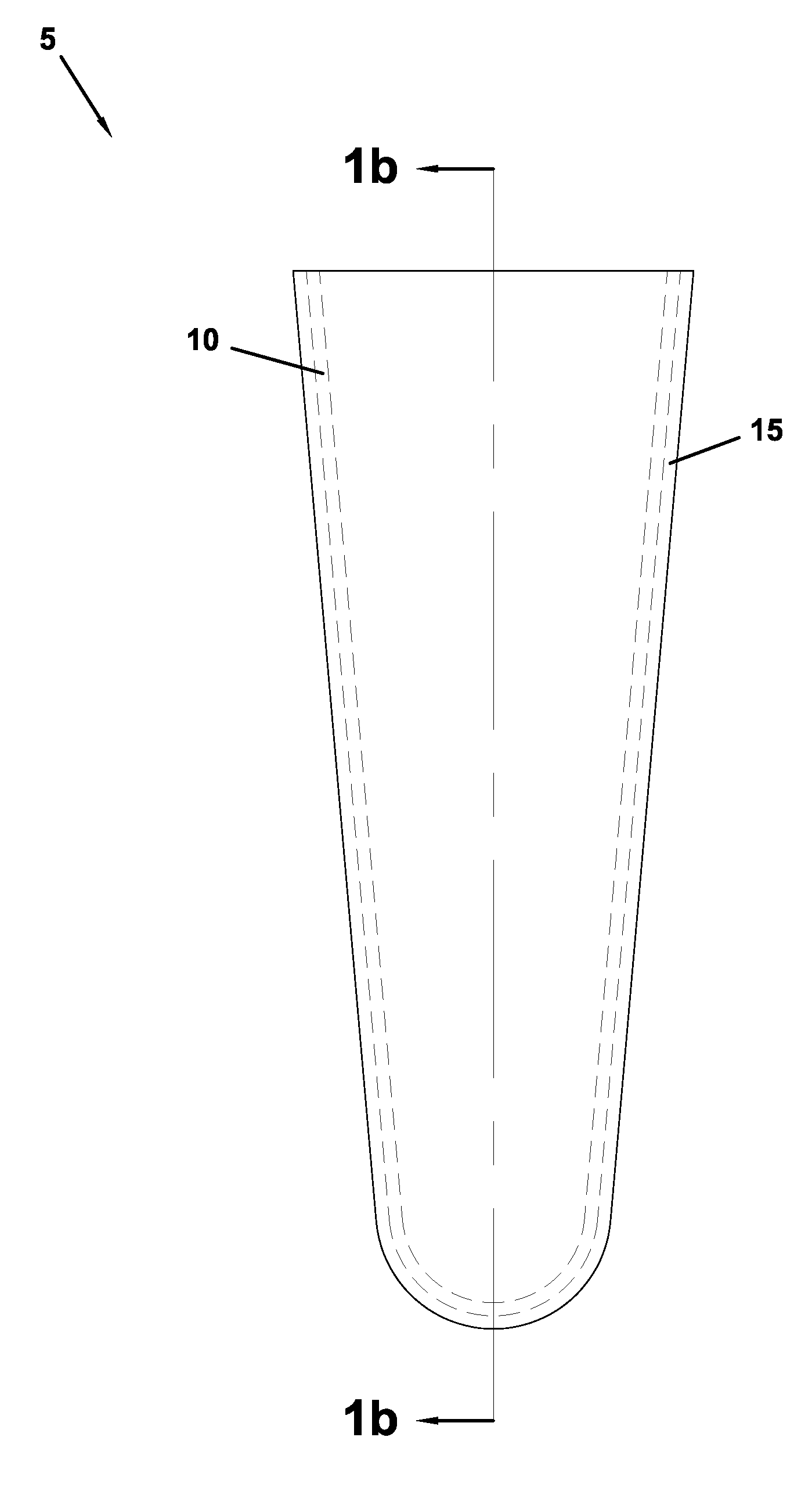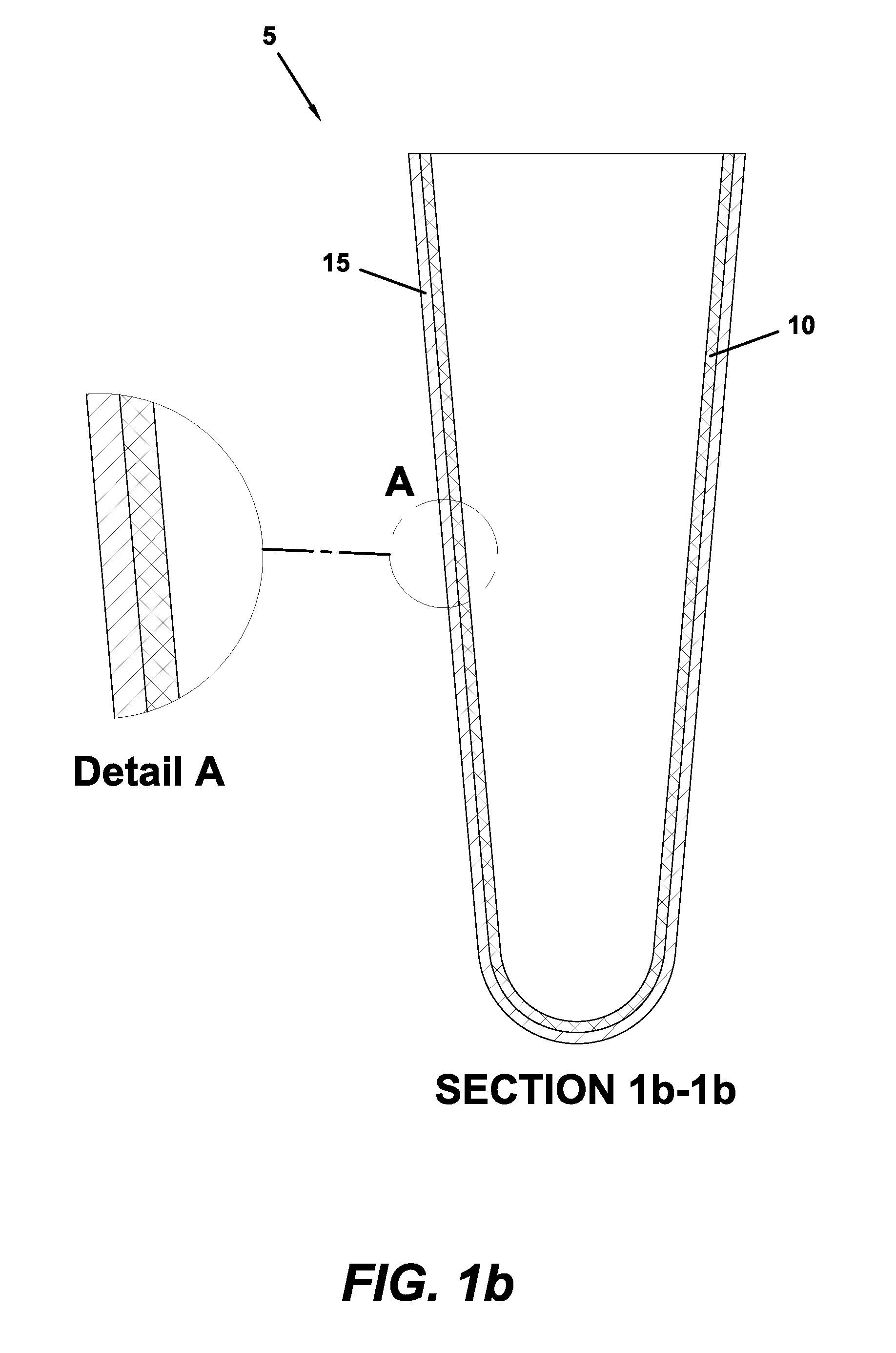Multi-layer polymeric prosthetic liner
a polymer and prosthetic technology, applied in the field of prosthetic lines, can solve the problems of inconvenient use, high durability of liners, and inability to meet the needs of users, and achieve the effects of improving comfort and cushioning, improving durability, and improving liner shape retention
- Summary
- Abstract
- Description
- Claims
- Application Information
AI Technical Summary
Benefits of technology
Problems solved by technology
Method used
Image
Examples
Embodiment Construction
)
[0039]Several exemplary embodiments of a prosthetic liner of the present invention are provided below. These exemplary embodiments are provided solely for the purpose of illustration, and not limitation. As described above, each embodiment includes inner and outer layers of polymeric materials of dissimilar mechanical properties. With respect to the particular exemplary embodiments described below, each embodiment includes an outer polymeric material layer that is harder than the inner polymeric material layer that it surrounds. It should be realized, however, that such a dissimilarity in hardness characteristics is not an essential feature of a liner of the present invention.
[0040]Any of the exemplary polymeric materials described above may comprise the respective inner and outer layers of the disclosed exemplary embodiments. For example, any of the exemplary liner embodiments may include an inner layer of a thermoplastic elastomer (TPE) gel or another suitably soft material such ...
PUM
| Property | Measurement | Unit |
|---|---|---|
| weight loss | aaaaa | aaaaa |
| weight loss | aaaaa | aaaaa |
| thermoplastic | aaaaa | aaaaa |
Abstract
Description
Claims
Application Information
 Login to View More
Login to View More - R&D
- Intellectual Property
- Life Sciences
- Materials
- Tech Scout
- Unparalleled Data Quality
- Higher Quality Content
- 60% Fewer Hallucinations
Browse by: Latest US Patents, China's latest patents, Technical Efficacy Thesaurus, Application Domain, Technology Topic, Popular Technical Reports.
© 2025 PatSnap. All rights reserved.Legal|Privacy policy|Modern Slavery Act Transparency Statement|Sitemap|About US| Contact US: help@patsnap.com



